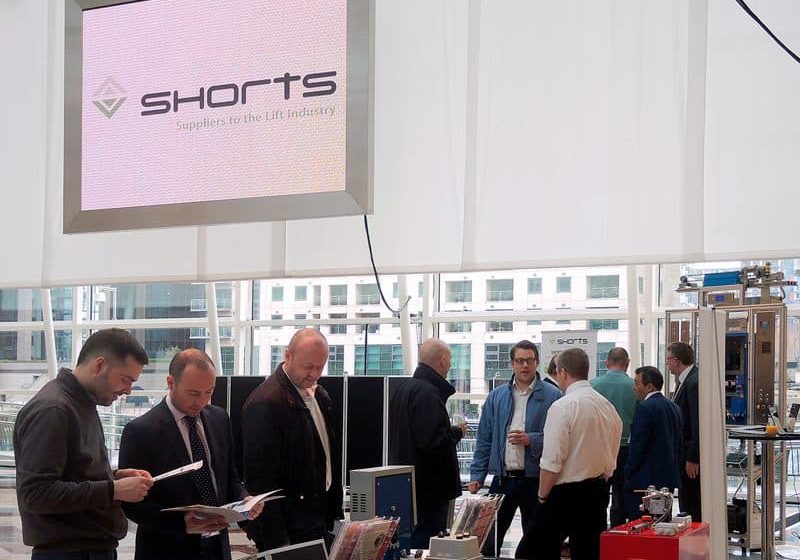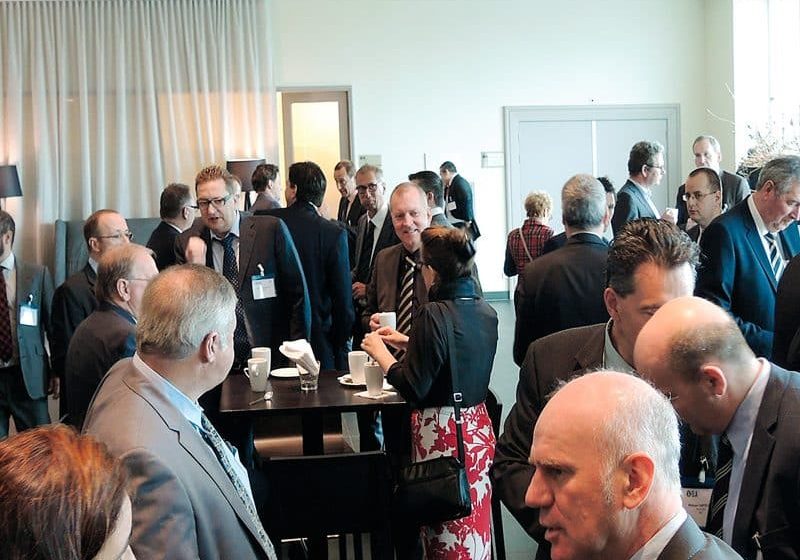Reconstructing an architectural jewel’s vertical-transportation system
Reconstructing a historic monument’s elevators represents a much more difficult and complex challenge than constructing a system for a new building. This was exactly what the Hungarian subsidiary of TÜV SÜD faced, starting in 1970, when it was tasked with rebuilding the vertical-transportation system of the Hungarian Parliament Building, on the Pest side of the Danube in Budapest. First, the team had to familiarize itself with the building, as well as the parliamentary procedures that have been in place there for more than 100 years.
Resembling an English Gothic castle reflecting the architectural style of the end of the 19th century, the building is considered the architectural jewel of the country. The structure was designed by Imre Steindl to mark Hungary’s 1,000th anniversary. It is meant to be a proud embodiment of Hungary, and was built using all-Hungarian materials and incorporating state-of-the-art amenities of the time.
For example, the building was the first in Hungary to boast a district-heating system, considered a novelty at the time. It consisted of two connected systems that complemented one another: there was a low-pressure, steam-heating system that provided heat through radiators to ensure a base temperature, supplemented with hot-air heaters to facilitate heat exchange. The ventilation system was of a similarly modern design. A predecessor of today’s air-conditioner, the system cooled the chambers and larger rooms and ensured air circulation during hot summers. A pair of shafts located in the park outside the building drew in air at approximately 140,000-160,000 m3 per hr., then guided it through a 15-20-mT ice block, cooled and humidified it, then blew it into the building’s halls through the floor and wall ducts. Fans installed in the chandeliers extracted used air. Remarkably, the system operated continuously until the mid 1990s, when a modern system was installed.
The building’s elevators also had to be state of the art and Hungarian made. Before the turn of the 20th century, however, electrically operated elevators were rare, and no one in the country manufactured them. Presumably, the business opportunity created by the building’s elevator needs prompted Vienna-based Wertheim and Freissler to establish a Budapest subsidiary, which became Freissler-Otis. The machines were mounted by the Hungarian Machine and Elevator Co.
The cabins at the north and south entrances were constructed with rich, ornamental design. Since they served high-ranking individuals, they were outfitted with red velvet sofas, crystal lamps, built-in brass ashtrays and control panels.
At its time of construction, the building was among the largest in the world, and its vertical-transportation system reflected that: it had 14 elevators (an additional, 100-kg dumbwaiter was added later), which, compared with today’s standards, is a paltry number. At the time, however, the 14 units were considered more than sufficient for the massive building. A descriptive list of the original elevators is as follows:
- Library: electrohydraulic passenger/freight elevator, capacity 320 kg, passage on ground floor, internal push buttons, external control panel, two stops
- Congress North: passenger elevator with driving disk and duplex up/down collecting control, capacity 800 kg, seven stops
- No. XVII Danube: historic passenger elevator with driving disk, capacity 1600 kg, simplex up/down collecting control, three stops
- No. XIII Freight: freight elevator with driving disk, capacity 1000 kg, internal push buttons and external control/display panel, seven stops
- MPs South: passenger elevator with driving disk and duplex up/down collecting control, capacity 480 kg, seven stops
- MPs North: passenger elevator with driving disk and duplex up/down collecting control, capacity 480 kg, seven stops
- No. VI: passenger elevator with driving disk and simplex up/down collecting control, capacity 1125 kg, seven stops
- No. I City: passenger elevator with driving disk and simplex up/down collecting control, capacity 1350 kg, three stops
- No. I Danube: passenger elevator with driving disk and simplex up/down collecting control, capacity 1350, three stops
- No. III Yard: Csomád, Hungary-made hydraulic freight elevator with external push buttons, capacity 200 kg, two stops
- No. XII: passenger elevator with driving disk, simplex up/down collecting control, capacity 1125 kg, four stops
- No. XVII City: passenger elevator with driving disk, simplex up/down collecting control, capacity 1350, three stops
- No. XXIV Restaurant: passenger elevator with bottom engine/driving disk, capacity 320 kg, simplex up/down collecting control, three stops
Descriptions of the elevators’ features appear in the original architectural document:
“In addition to stairways, there were 10 elevators used for passenger traffic, [including] two located at the south side of the house, for three persons each, and two located in the direct vicinity of the chamber, for seven persons each, and one next to the large cloakroom, for seven persons, i.e., five passenger elevators in total, by which, in addition to the attendants, 27 persons can be comfortably transported, which represents a capacity of 600 persons per hour. In addition thereto, there are two food lifts in use at the restaurant. The same number of elevators can be found at the side of the ‘Upper House.’ These elevators are of the best quality, by Freissler, equipped to be driven by electric power, and they provide [the] highest standard [of] safety in every respect.”
The document, which describes the elevators as “made of mahogany wood, with ornamental inlay,” also lists safety features, which included devices designed to:
- Prevent a crash if the steel-wire rope holding the elevator cabin tore
- Stop the elevator without a thrust if it moved faster than specified running speed
- Stop the elevator if there were an obstacle in its way
- Prevent the start of the elevator when the cabin door was open, or immediately stop it should someone open the door and try to exit during travel
- Guide the elevator manually to the next stop if stopped between floors
- Tighten the steel-wire rope cable if it became loose
- Automatically interrupt electricity if the elevator passed the terminal station
- Automatically lock doors of elevators not positioned at exit points
Following the concept of the era, elevators had bottom engine-house construction with largely over-dimensioned worm-gear drives and DC single-gear electric drives. The units were equipped with all the latest safety devices, which were similar to those of modern elevators. Slide-button-activated control devices were operated by attendants, known at the time as “lift boys.” In a testament to their diligence, designers performed traffic calculations to determine the transport capacity of each piece of equipment.
Special attention should be paid to the elevator cabin and shaft door designs aligned to the internal construction of the building. The semiautomatic shaft doors and cabins were constructed of native Hungarian wood, such as curly maple and oak, accented with rich inlay. Conceived by Steindl, the pair of elevators located in the staircase area of the main entrance — Nos. VI and XIII — have especially decorative cabins. The cabins at the north and south entrances were constructed with a similarly rich, ornamental design. Since they served high-ranking individuals, they were outfitted with red velvet sofas, crystal lamps, built-in brass ashtrays and control panels. Diagonally arranged cabin and shaft doors allowed passengers who preferred to travel incognito to walk between the inside cabinet and the cloakroom to enter the building without setting foot in the common corridor. The cabins’ floor areas were significantly larger than those authorized in later years. As a result, problems emerged regarding overruns at the bottoms and tops of shafts, which, according to today’s standards, were constructed for a very low running speed (approximately 0.5 mps) in mind.
In accordance with accepted technological mores, the reconstructed elevators utilized upper engine-house arrangement.
Prior to World War I, upon expiration of the original equipment’s 10-year warranty, Otis performed an inspection and, as a result, installed double worm-gear drives in each of the two elevators at the north and south entrances in an effort to reduce contact pressure generated on the drives’ surface. The upgrade extended the equipment’s warranty for another 50 years, and, remarkably, it ended up operating for another 60 years — surviving war damage, revolutions and regime changes.
In the 1930s, the elevators were partially renovated in accordance with current technical requirements. Renovations were limited to replacement of “parts subject to quick wear and tear” and out-of-date units such as electric drive and control devices. AC drives and internal/external elevator-control push-button systems that provided a much higher comfort level than that of slide-button systems were installed, with the mechanical devices, cabins and shaft doors left unaltered.
At the start of 1970s and after about 80 years of operation, reconstruction became inevitable, justified by not only the equipment’s worn condition, but also by the vast increase in traffic in the building, which was emerging as a top tourist attraction. In order to reliably serve traffic, capacity had to be increased significantly, and waiting periods had to be shortened. However, the building’s architectural features did not allow for installation of more elevators, with the exception of a freight elevator. Moreover, existing shafts could not be extended.
Another strict requirement of Hungary’s Office for Protection of Historic Monuments was that newly installed cabins and shaft doors match the building’s interior architecture, and that original cabins and doors be preserved where possible. Types of wood and other materials required government approval. These were the initial conditions under which elevator reconstruction commenced in the early 1970s. The government awarded the renovation contract to the Freissler-Otis elevator factory of Vienna and its Hungarian subcontractor, Gép és Felvonószerelő Vállalat (Machinery and Elevator Installation Co.).
Prior to the design phase, all units were inspected by a board consisting of Parliament experts, contractors and Hungarian furniture designers. On the basis of the board’s opinion, each elevator received individualized attention. In addition to providing reliable and safe operation, the most important goal of the project was increasing the system’s capacity. For that reason, several freight elevators were converted to passenger ones. Load-bearing capacity was increased in accordance with available floor area. In consideration of potential overrun at the bottom and tops of shafts, elevators of higher running speeds (1-1.5 mps) were installed. They were constructed with machine-operated cabin and shaft doors, which reduced waiting times, particularly for entry and exit.
Improved operability and optimum running speed were initially provided for by regulated, DC, Ward-Leonard drives, and later by AC variable-frequency drives. Due to the building’s relatively low elevation and high load-bearing capacity, installation of hydraulic elevator drives was first proposed. However, that proposal was rejected, since structural engineers did not authorize drilling into the building’s homogeneous, several-meter-thick concrete foundation. Doing so could have compromised the structure’s stability and allowed groundwater ingress. The space demand of hydraulics supplied with a stroke-multiplier mechanism placed next to the cabin would have reduced the already narrow shaft cross-section. Also, the many switches could have caused overheating and effervescence of the hydraulic oil. This was verified by operation of the test elevator installed at the north gate on the Danube side. After a few years of operation, the equipment was replaced by an epicyclical gear-driven elevator due to frequent failures attributable to overheating. The replacement equipment perfectly handled the significant extent of load incurred.
The portion of reconstruction requiring greatest attention was preservation of the almost 100-year-old wooden cabins and shaft doors. Special attention had to be paid to the Gothic-style cabins at the main entrance, as they are essentially irreplaceable. The contractor preserved their unique style by substituting the original wooden side walls and the cabin cupola (as well as other parts damaged by oil) with a steel frame outfitted with rubber vibration insulation. Thus reconstructed and supplied with mechanically operated doors, the historic cabins could continue to operate at higher running speeds and provide a better comfort level.
The shaft-door situation was more challenging. Even today, this issue has not been resolved to full satisfaction. The issue is that the appearance of the shaft doors needed to align with the historic building’s environment and existing covering, which was not feasible with modern, steel-plate, mechanically operated shaft doors. Further, it was not possible to mount hand-carved wooden coverings onto the steel plate, as they must have a flat surface. Therefore, in the case of the first reconstruction of the president of the republic’s elevator, a door was installed without wooden lining in a color similar to the environment and existing door frame. From a technical standpoint, the solution was perfect, but aesthetically, it left room for improvement. Also, the color of the stainless-steel threshold deviated from the environment’s gilded ornamentation. The door will have to be replaced at some point. After the initial attempt, the concept of a shaft door with an external wooden lining was raised, but this solution was rejected, since it would have interfered with the movement of the door wings.
The third attempt brought about an interim solution, which, while not yet entirely perfect, is acceptable. In particular, the machine-operated, steel-plate shaft door of a color that matches its surroundings was mounted to the internal plane of the shaft end wall. The original wooden shaft door was placed back onto the wall’s external plane, having practically no function. With that, the internal décor became perfect, while allowing the mechanical door to operate as required. The double door, however, represented an obstacle to traffic. Perhaps a future generation will be able to find an even better solution.
In accordance with accepted technological mores, the reconstructed elevators utilized upper engine-house arrangement. In the vast majority of cases, this did not present a problem, since there was plenty of space available in the attic. However, in the case of the loft elevators that traveled to higher levels, the machinery could be accommodated only by the old wheel boxes of a floor space identical to or smaller than that of the shaft, due to the dimensions getting narrower in the upper parts of the building. For that reason, the upper engine houses were built using a two-level design.
The elevators were manufactured by Otis, and installed and maintained by Gép és Felvonószerelő Vállalat, later Otis Felvonó Kft. Upgrades were initially performed by engineers from Vienna and Berlin. Now, this task is performed by Hungarian experts. To ensure the equipment’s smooth operation, an expert technical staff at the Parliament building attends to matters on an as-needed basis.
Over the course of several decades, the experts involved in this project built a library of knowledge that can serve as a guide for those performing conservation and refurbishment of historic elevators worldwide. In summary, the project was completed in a manner that honors Hungary’s most historic monument. All involved hope the refurbished equipment will serve its vertical-transportation needs for decades to come.
Hungarian Parliament Building Facts
- It has 691 rooms, and is 268 m long, 123 m wide and 96 m tall.
- Construction was started in 1885 and completed in 1904.
- Architect Imre Steindl went blind before the project was completed.
- Construction involved 40 million bricks, 500,000 precious stones and 40 kg of gold.
- During the communist regime, a red star sat atop the Renaissance Revival dome.
- The façade features statues of Hungarian and Transylvanian leaders and military officials, while the interior boasts stained glass and painted mosaics.
- Since 2000, the Holy Crown of Hungary has been on display.
Get more of Elevator World. Sign up for our free e-newsletter.







